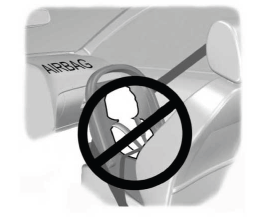Lincoln Aviator: Second Row Seats / Removal and Installation - Second Row Seat - Vehicles With: Second Row Captain Chairs
Special Tool(s) / General Equipment
| Interior Trim Remover |
Removal
.jpg) WARNING:
The following procedure describes critical repair steps
required for correct seat component installation. Follow all notes and
steps carefully. Do not place any objects between the seat components
and the body of the vehicle, nor any objects within a joint internal to
the seat structure. Failure to follow step instructions may result in
incorrect operation of the seat components and increases the risk of
serious personal injury.
WARNING:
The following procedure describes critical repair steps
required for correct seat component installation. Follow all notes and
steps carefully. Do not place any objects between the seat components
and the body of the vehicle, nor any objects within a joint internal to
the seat structure. Failure to follow step instructions may result in
incorrect operation of the seat components and increases the risk of
serious personal injury.
NOTE: LH (left hand) shown, RH (right hand) similar.
NOTE: Removal steps in this procedure may contain installation details.
-
Remove the second row seat front bolt covers.
Use the General Equipment: Interior Trim Remover
.jpg) |
-
Remove the second row front seat bolts.
Torque: 35 lb.ft (48 Nm)
.jpg) |
-
Disconnect the second row seat electrical connectors.
.jpg) |
-
Position the seat to the full forward position.
.jpg) |
-
Remove the second row seat bolt covers.
Use the General Equipment: Interior Trim Remover
.jpg) |
-
Remove the second row seat rear bolts.
Torque: 35 lb.ft (48 Nm)
.jpg) |
-
Remove the second row seat.
.jpg) |
Installation
-
To install, reverse the removal procedure.
 Removal and Installation - Second Row Seat
Removal and Installation - Second Row Seat
Special Tool(s) /
General Equipment
Interior Trim Remover
Removal
WARNING:
The following procedure describes critical repair steps
required for correct seat component installation...
 Removal and Installation - Second Row Seat Armrest
Removal and Installation - Second Row Seat Armrest
Special Tool(s) /
General Equipment
Interior Trim Remover
Removal
NOTE:
Removal steps in this procedure may contain installation details...
Other information:
Lincoln Aviator 2020-2025 Owners Manual: Cleaning the Instrument Panel and Instrument Cluster Lens
WARNING: Do not use chemical solvents or strong detergents when cleaning the steering wheel or instrument panel to avoid contamination of the airbag system. Note: Follow the same procedure as cleaning leather seats for cleaning leather instrument panels and leather interior trim surfaces...
Lincoln Aviator 2020-2025 Service Manual: Removal and Installation - Rain Sensor
Materials Name Specification Motorcraft® Ultra-Clear Spray Glass CleanerZC-23 ESR-M14P5-A Removal Remove the interior rear view mirror. Refer to: Interior Rear View Mirror (501-09 Rear View Mirrors, Removal and Installation)...
Categories
- Manuals Home
- Lincoln Aviator Owners Manual
- Lincoln Aviator Service Manual
- Resetting the System
- Refueling
- Configuring The Head Up Display
- New on site
- Most important about car
Children and Airbags
WARNING: Airbags can kill or injure a child in a child restraint. Never place a rear-facing child restraint in front of an active airbag. If you must use a forward-facing child restraint in the front seat, move the seat upon which the child restraint is installed all the way back.

